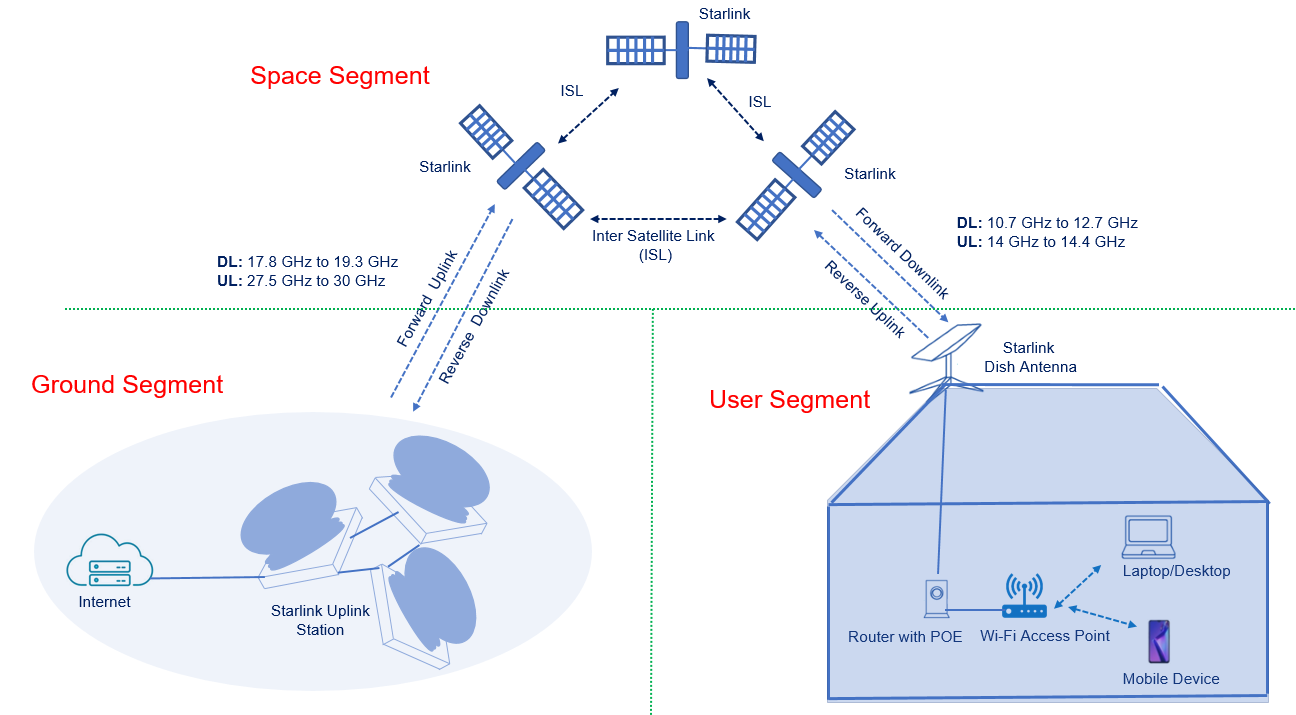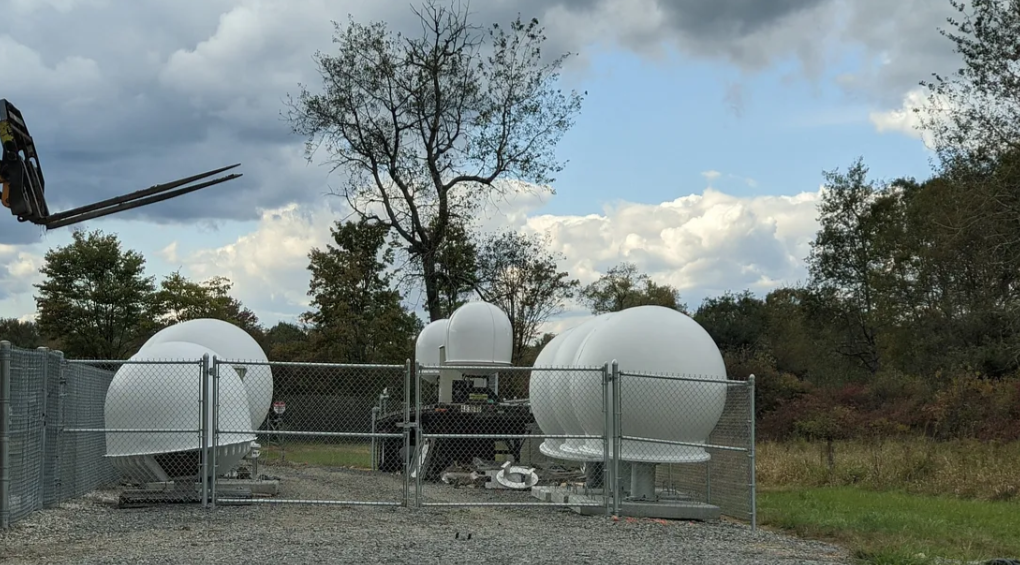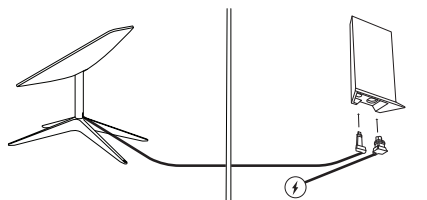SpaceX – Starlink System Architecture for Internet
SpaceX – Starlink
In the era 5G, internet is considered a fundamental need for people. but still there are many areas around the world where internet access is limited or non-existent due to technological and geographical challenges. SpaceX, a private space company owned by Elon Musk, aims to address this issue through its Starlink satellite internet network.

Starlink is a constellation of low Earth orbit (LEO) satellites that provide high-speed internet access to even the most remote parts of the world. It gaols is to provide affordable and high-speed internet to remote areas (mountains, hills, sea) where traditional cellular or Fiber internet service is limited or not available.
Starlink Key Pointers
- FCC granted permission to deploy SpaceX Starlink in year 2018 in USA
- Starling operates in Lower Earth Orbit (LEO) in five orbital shells
- Starlink operates at an altitude of 550 kilometers (340 miles) above the earth
- Starlink uses Ka, Ku, and V frequency bands
- Starlink system uses phase array antennas for uplink/downlink and laser communication in the inter-satellite link (ISL)
- Starlink use SC-TDM in Uplink (Ground to Satellite) and SC-FDMA in Downlink (Satellite to Ground)
Starlink System Architecture
Starlink system architecture includes following three segments shown diagram.
- Space Segment
- Ground Segment
- User Segment

Space Segment
This segment is consist of no. of satellite in the Lower Earth Orbit (LEO). These satellites are small, low-cost satellites that weigh about 260 kg, operate in the Ku-band and Ka-band and having a lifespan of 5–7 years. These satellite connected the User to the internet.
As there are a huge number of satellite to do communicate to each other over Inter-satellite link (ISL). It uses phase array antennas for uplink/downlink and laser communication in the ISL link. CPE-Satellite communication uses Ku band frequencies and Ground Station-Satellite communication uses Ku band for downlink and Ka band for uplink. Starlink’s satellites generate ultra small spot size beams due to the fact that they are much closer to the earth.
Ground Segment
Starlink ground segment include different facilities that manage the network and provide internet connectivity to the satellites. These also as Ground Stations or Starlink Gateways and strategically located around the world to provide coverage to remote and poor internet connectivity areas. The ground station is connected to Internet Service Provider with a Fiber.

Image source: chimniii.com
User Segment
The User Segment include area where people are using the internet services using the Starlink CPE. This CPE consists of a satellite dish installed on the rooftop or on ground having a clear visibility of Sky, a router power supply and a WiFi router. The dish consists of a phased antenna array of the stacked honeycomb structure which automatically align with the available satellite.

The router is equipped with a Gigabit Ethernet port and Wi-Fi to provide connectivity. The satellite dish is connected to the router and both are powered using Power over Ethernet (PoE). One router can support up to 128 devices simultaneously. It is operated with a 56 V DC supply provided through PoE. The router complies with IEEE 802.11 standard and operates at 2.4 GHz and 5 GHz.
Starlink KPIs:
Starlink satellite service can provide performance comparable or better than cellular systems in remote/rural areas. Following is the list of Major Key Performance Indicators (KPIs) justifying the performance.
- Average download throughput ̴ 170 Mbps
- Maximum download throughput ̴ 330 Mbps
- Average upload throughput ̴ 17 Mbps
- Maximum upload throughput ̴ 60 Mbps
- Latency 30ms – 2s
- Percentage of time latency is below 90ms 98%
- Percentage of time latency is below 50ms 77%
- Down time 2.4%
- Average power consumption 105 W
- Peak power consumption 190 W
Starlink Advantages:
- Global Coverage: The satellite constellation is designed to provide internet access to remote and underserved areas globally.
- Low Latency: The low Earth orbit design helps reduce signal latency compared to traditional satellite internet services.
- High Bandwidth: Starlink aims to provide high-speed internet comparable to or better than many terrestrial broadband services.
Related Topics:
- 5G Satellite Architecture | Transparent and Regenerative Payload
- 3GPP Frequency Bands for 5G Satellite Communication
- 3GPP 5G Advanced Features
References:



